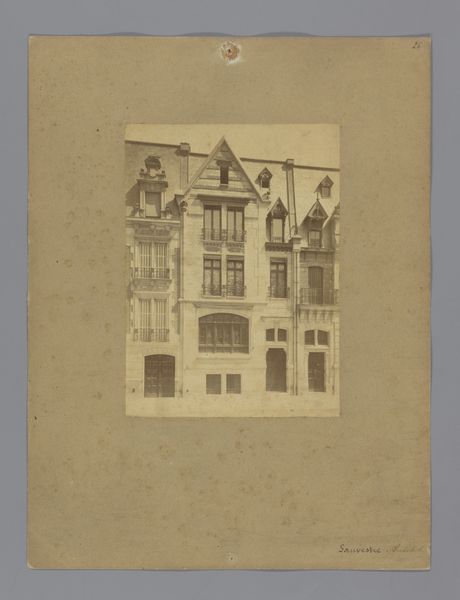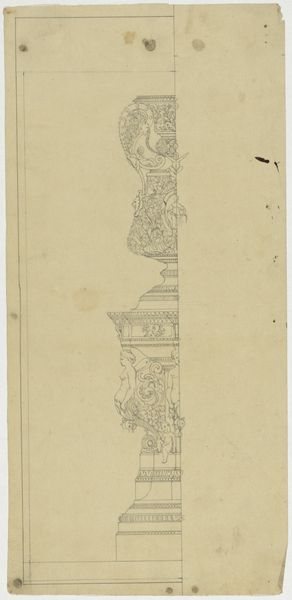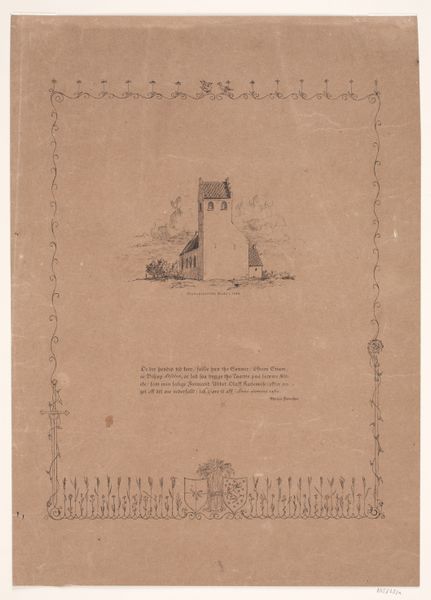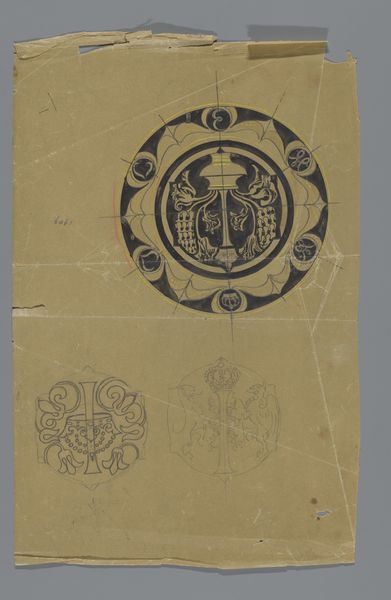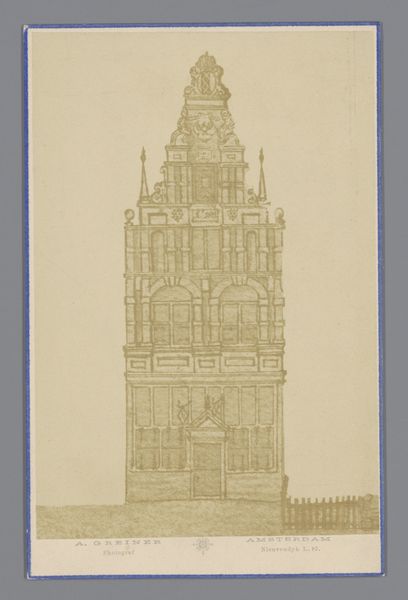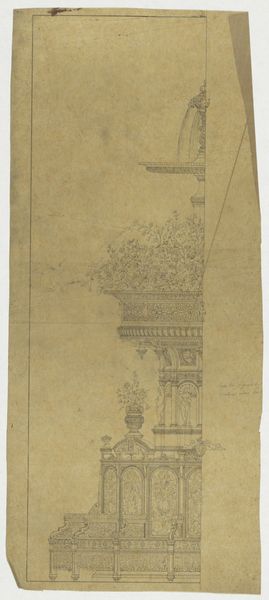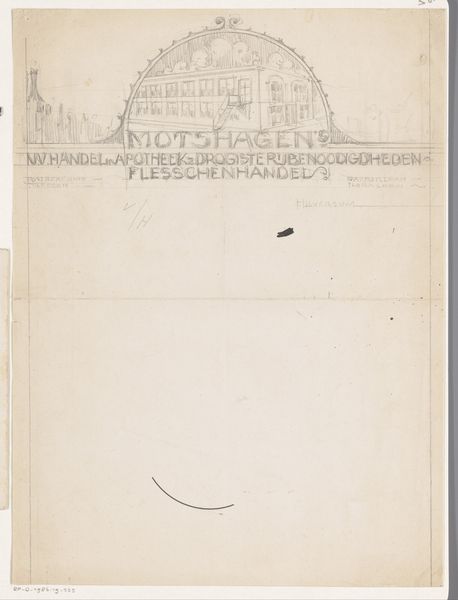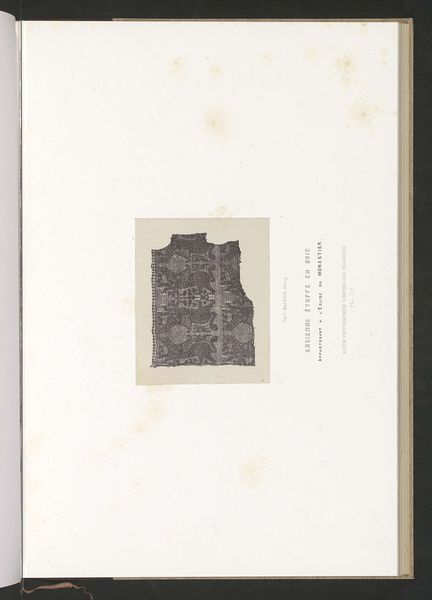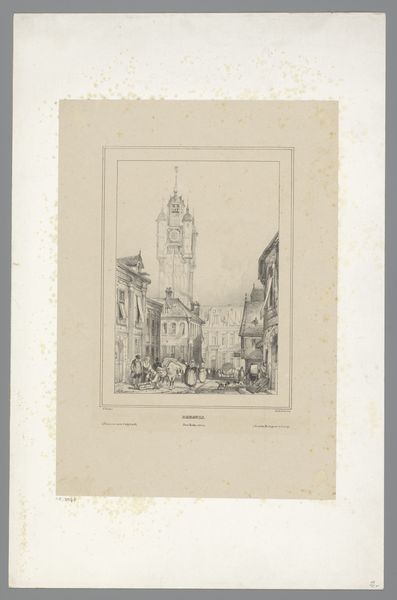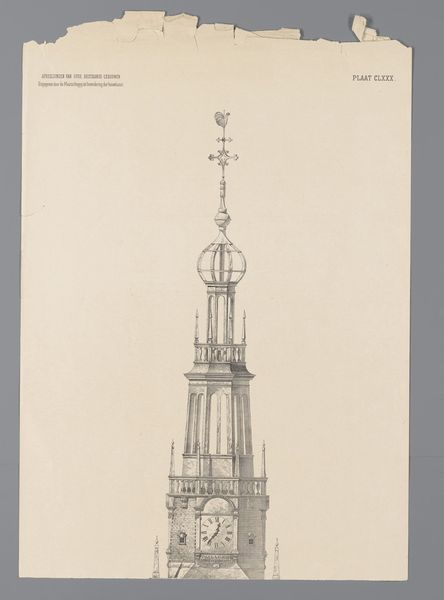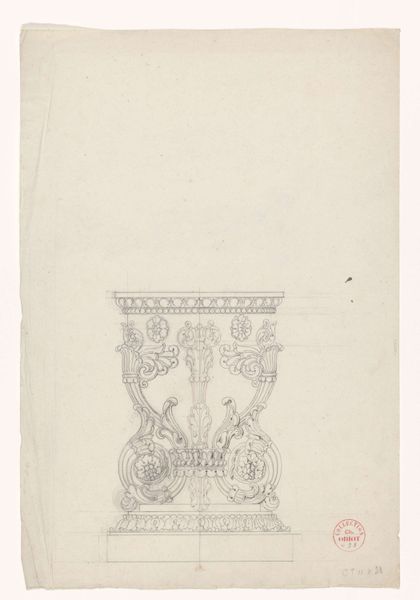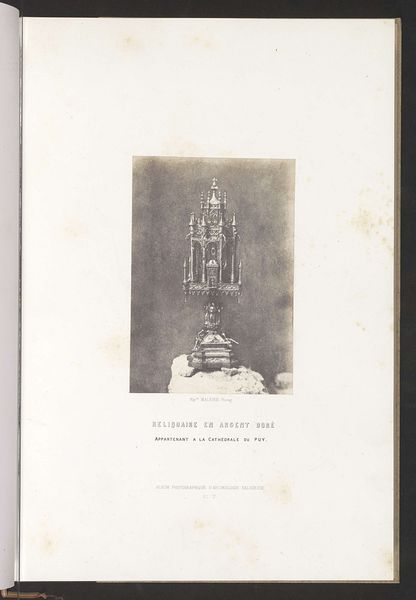
Fotoreproductie van een tekening van de voorgevel van het Burgerweeshuis te Amsterdam 1861 - 1874
0:00
0:00
albertgreiner
Rijksmuseum
drawing, paper, ink, architecture
#
drawing
#
paper
#
ink
#
cityscape
#
architecture
#
realism
#
building
Dimensions: height 152 mm, width 103 mm, height 369 mm, width 300 mm
Copyright: Rijks Museum: Open Domain
This phot reproduction presents Albert Greiner's drawing of the Burgerweeshuis orphanage in Amsterdam. The facade's elaborate ornamentation speaks to a cultural desire for order and containment. Consider the tower-like structure, its verticality and layered divisions reminiscent of the Tower of Babel. In that myth, the tower represented human ambition that sought to reach the divine, leading to confusion and dispersal. Similarly, orphanages might symbolize a society's attempt to order the chaos of lost or abandoned children, imposing structure on vulnerable lives. The architectural symmetry also echoes the classical ideals of balance and harmony, like the Pantheon, yet the orphanage houses a population outside the traditional family structure. The tower motif, whether in cathedrals, government buildings, or here, serves as a potent reminder of humanity's striving for order and the inherent tensions between aspiration and reality. This structure, therefore, engages us on a profound psychological level, stirring subconscious associations with both aspiration and control.
Comments
No comments
Be the first to comment and join the conversation on the ultimate creative platform.
